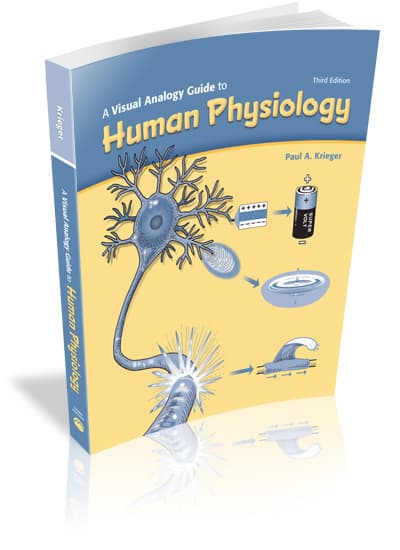
$40.00

The Visual Analogy Guides to Human Anatomy & Physiology are affordable and effective study aids for students enrolled in an introductory anatomy and physiology sequence of courses. These books use visual analogies to assist the student in learning the details of human anatomy and physiology. Using these analogies, students can take things they already know from experiences in everyday life and apply them to anatomical structures and physiological concepts with which they are unfamiliar. These books offer a variety of learning activities. Students can label diagrams, create their own drawings, or color existing black-and-white illustrations to better understand the material presented.
Watch this brief video to see some examples!
For nearly 20 years, Paul A. Krieger has taught courses in human anatomy and physiology, general biology, and general chemistry to students in the United States and abroad. Long active in community outreach programs at local schools and regional science festivals, Paul has written and illustrated the best-selling Visual Analogy Guide series, which includes separate guides for anatomy, physiology, anatomy and physiology, and chemistry.
Professor Krieger is an active member of many scientific and professional associations including the Human Anatomy & Physiology Society, the Michigan Science Teachers Association, and Michigan Community College Biologists. He has successfully presented numerous workshops at the local, state, and national levels on topics such as improving the teaching and learning process. In addition to teaching, Paul is an accomplished artist. He lives with his wife and son in Grand Rapids, Michigan.